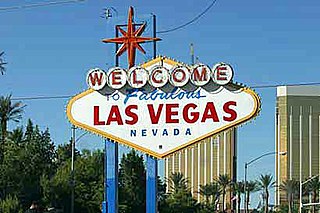 W
WSignage is the design or use of signs and symbols to communicate a message. A signage also means signs collectively or being considered as a group. The term signage is documented to have been popularized in 1975 to 1980.
 W
WThe American Sign Museum in Cincinnati, Ohio, preserves, archives, and displays a collection of signs. The museum also displays the equipment utilized in the design and manufacture of signs. Tod Swormstedt began working on the museum in 1999. It opened to the public in 2005.
 W
WArbeit macht frei is a German phrase meaning "Work sets you free" or "Work makes one free". The slogan is known for appearing on the entrance of Auschwitz and other Nazi concentration camps.
 W
WA banner can be a flag or other piece of cloth bearing a symbol, logo, slogan or other message. A flag whose design is the same as the shield in a coat of arms is called a banner of arms. Also, a bar-shaped piece of non-cloth advertising material sporting a name, slogan, or other marketing message.
 W
WA barber's pole is a type of sign used by barbers to signify the place or shop where they perform their craft. The trade sign is, by a tradition dating back to the Middle Ages, a staff or pole with a helix of colored stripes. The pole may be stationary or may rotate, often with the aid of an electric motor.
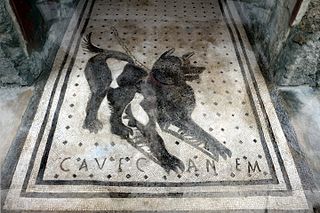 W
WBeware of the dog is a warning sign indicating that a dangerous dog is within. Such signs may be placed to deter burglary even if there is no dog.
 W
WFounded in 2002, C-nario is a provider of digital signage software, headquartered in Israel.
 W
WA paifang, also known as a pailou, is a traditional style of Chinese architectural arch or gateway structure. Evolved from the Indian subcontinent's torana through the introduction of Buddhism to China, it has developed many styles and has been introduced to other East Asian countries, such as Korea, Japan, and Vietnam.
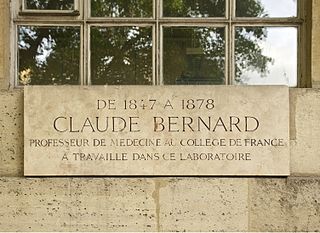 W
WA commemorative plaque, or simply plaque, or in other places referred to as a historical marker or historic plaque, is a plate of metal, ceramic, stone, wood, or other material, typically attached to a wall, stone, or other vertical surface, and bearing text or an image in relief, or both, to commemorate one or more persons, an event, a former use of the place, or some other thing. Many modern plaques and markers are used to associate the location where the plaque or marker is installed with the person, event, or item commemorated as a place worthy of visit. A monumental plaque or tablet commemorating a deceased person or persons, can be a simple form of church monument. Most modern plaques affixed in this way are commemorative of something, but this is not always the case, and there are purely religious plaques, or those signifying ownership or affiliation of some sort. A plaquette is a small plaque, but in English, unlike many European languages, the term is not typically used for outdoor plaques fixed to walls.
 W
WThe Czech Hiking Markers Standard is an international system of hiking markers for tourist trails, used in more countries than any competing standard. The signs and markers can be used in both wilderness and cities.
 W
WCzech Tourist Club, known also as Czech Hiking Club was created in 1888. With over 40.000 members, it is a large organisation responsible for maintaining the dense Czech Hiking Markers System.
 W
WA destination sign or destination indicator/destination blind is a sign mounted on the front, side or rear of a public transport vehicle, such as a bus, tram/streetcar or light rail vehicle, that displays the vehicle's route number and destination, or the route's number and name on transit systems using route names. The main such sign, mounted on the front of the vehicle, usually located above the windshield, is often called the headsign, most likely from the fact that these signs are located on the front, or head, end of the vehicle. Depending on the type of the sign, it might also display intermediate points on the current route, or a road that comprises a significant amount of the route, especially if the route is particularly long and its final terminus by itself is not very helpful in determining where the vehicle is going.
 W
WDigital signage is a sub-segment of electronic signage. Digital displays use technologies such as LCD, LED, projection and e-paper to display digital images, video, web pages, weather data, restaurant menus, or text. They can be found in public spaces, transportation systems, museums, stadiums, retail stores, hotels, restaurants and corporate buildings etc., to provide wayfinding, exhibitions, marketing and outdoor advertising. They are used as a network of electronic displays that are centrally managed and individually addressable for the display of text, animated or video messages for advertising, information, entertainment and merchandising to targeted audiences.
 W
WA display typeface is a typeface that is intended for use at large sizes for headings, rather than for extended passages of body text.
 W
WA door hanger is a plastic or cardboard sign, generally rectangular in shape, cut to hang from the handle or knob of a door. They are sometimes used to distribute print advertising to residences. Door hangers are often seen in hotels and other places of lodging as a means for guests to communicate with maintenance and housekeeping staff.
 W
WThe term drumhead refers to a type of removable sign that was prevalent on North American railroads of the first half of the 20th century. The sign was mounted at the rear of passenger trains, and consisted of a box with internal illumination that shone through a tinted panel bearing the logo of the railroad or specific train. Since the box and the sign were usually circular in shape and resembled small drums, they came to be known as drumheads.
 W
WAn enamel sign is a sign made using vitreous enamel. These were commonly used for advertising and street signage in the period 1880 to 1950. Benjamin Baugh created the first purpose-built factory for making such signs in Selly Oak in 1889 — the Patent Enamel Company. The technique of porcelain enamelling on cast iron was developed in Central Europe in the early 1800s.
 W
WAn exit sign is a pictogram or short text in a public facility denoting the location of the closest emergency exit to be used in case of fire or other emergency that requires rapid evacuation. Most relevant codes require exit signs to be permanently lit.
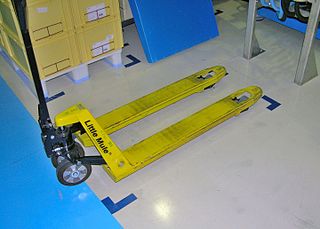 W
WFloor marking tapes are adhesive tapes used to mark hazards, divide spaces, create aisles, or provide directions. They are commonly used in industrial and manufacturing facilities for floor marking. They are made of multiple different materials, including PVC and vinyl, and vary in thickness from 5-mils to 55-mils for a wide range of durability options for manufacturing facility floor marking. The best floor marking tapes are usually 50 to 60 mils thick. Most tapes come in a variety of color options and even hazard patterns to meet U.S. Occupational Safety and Health Administration/ANSI requirements and other safety standards. Some tapes are made with higher reflectivity and may even glow in the dark.
 W
WA ghost sign is an old hand-painted advertising sign that has been preserved on a building for an extended period of time. The sign may be kept for its nostalgic appeal, or simply indifference by the owner.
 W
WAn informative sign is a very legibly printed and very noticeable placard that informs people of the purpose of an object, or gives them instruction on the use of something. An example is a traffic sign such as a stop sign.
 W
WInn signs have a history that extends beyond the Middle Ages, when many houses were identified by a sign, often a heraldic charge, which signified that the premises were under the special care of a nobleman, or a vivid image that impressed itself on the memory. The ruins of Herculaneum and Pompeii reveal that most of their street-front shops displayed an identifying sign outside.
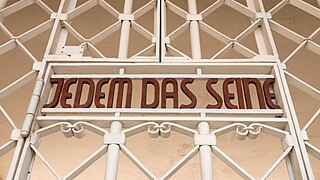 W
W"Jedem das Seine" is the literal German translation of the Latin phrase suum cuique, meaning "to each his own" or "to each what he deserves".
 W
WA system of roadside signage developed by the Pennsylvania Department of Highways just after the First World War, the iconic Keystone Markers could be found at the entrance to every Pennsylvania town, borough and city. Variations of the marker could be found at highway crossings of creeks, rivers, trails, borough lines, and other points of interest.
 W
WA Kodak Photo Spot is a location with a Kodak-sponsored sign indicating a recommended spot from which to take a photograph. They are found in areas popular with tourists, and are particularly common in Disney theme parks. This was until 2012, when the Kodak company filed for bankruptcy, and ended their sponsorship as the camera and film supplier for Disney Parks. In 2013, Nikon became the official sponsor of camera supplies in Disney Parks in the US, and the Kodak Photo Spots were re-branded as Nikon Photo Spots.
 W
WLawn signs are small advertising signs that can be placed on a street-facing lawn or elsewhere on a property to express the support for an election candidate, or political position, by the property owner. They are popular in political campaigns in the United States and Canada.
 W
WLettering is an umbrella term that covers the art of drawing letters, instead of simply writing them. Lettering is considered an art form, where each letter in a phrase or quote acts as an illustration. Each letter is created with attention to detail and has a unique role within a composition. Lettering is created as an image, with letters that are meant to be used in a unique configuration. Lettering words do not always translate into alphabets that can later be used in a typeface, since they are created with a specific word in mind.
 W
WA light-emitting diode (LED) is a semiconductor light source that emits light when current flows through it. Electrons in the semiconductor recombine with electron holes, releasing energy in the form of photons. The color of the light is determined by the energy required for electrons to cross the band gap of the semiconductor. White light is obtained by using multiple semiconductors or a layer of light-emitting phosphor on the semiconductor device.
 W
WA marquee is most commonly a structure placed over the entrance to a hotel, theatre, casino, train station, or similar building. It often has signage stating either the name of the establishment or, in the case of theatres, the play or movie and the artist(s) appearing at that venue. The marquee is sometimes identifiable by a surrounding cache of light bulbs, usually yellow or white, that flash intermittently or as chasing lights.
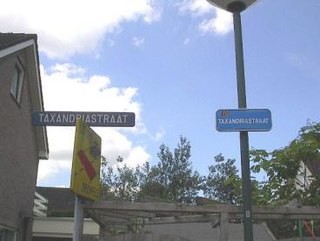 W
WA nameplate identifies and displays a person or product's name. Nameplates are usually shaped as rectangles but are also seen in other shapes, sometimes taking on the shape of someone's written name. Nameplates primarily serve an informative function or a commercial role. Whereas name tags tend to be worn on uniforms or clothing, nameplates tend to be mounted onto an object or physical space. Nameplates are also distinct from name plaques. Plaques have larger dimensions and aim to communicate more information than a name and title.
 W
WThe Neon Museum in Las Vegas, Nevada, United States, features signs from old casinos and other businesses displayed outdoors on 2.62 acres. The museum features a restored lobby shell from the defunct La Concha Motel as its visitors' center, which officially opened on October 27, 2012.
 W
WNeon Museum, also the Museum of Neon is a museum located in Warsaw's Praga-Południe. The institution documents and protects Polish and Eastern Bloc light advertisements created after World War II. It is the first in Poland and one of the few museums of neon signs in the world.
 W
WIn the signage industry, neon signs are electric signs lighted by long luminous gas-discharge tubes that contain rarefied neon or other gases. They are the most common use for neon lighting, which was first demonstrated in a modern form in December 1910 by Georges Claude at the Paris Motor Show. While they are used worldwide, neon signs were popular in the United States from about the 1920s to 1950s. The installations in Times Square, many originally designed by Douglas Leigh, were famed, and there were nearly 2,000 small shops producing neon signs by 1940. In addition to signage, neon lighting is used frequently by artists and architects, and in plasma display panels and televisions. The signage industry has declined in the past several decades, and cities are now concerned with preserving and restoring their antique neon signs.
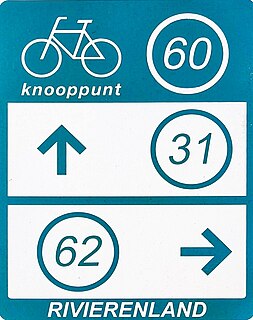 W
WThe numbered-node cycle network is a wayfinding system. It spans the Netherlands, Belgium, parts of Germany, and parts of Croatia, and is expanding rapidly, as of 2017. Each intersection or node is given a number, and the numbers are signposted, so the cyclist always knows which way to go to get to the next node.
 W
WPadstool or fietspadstool is a form of rural wayfinding signage for cyclists, in use in the Netherlands. They are named for their toadstool-like shape; "paddenstoel" first came into use as a nickname around 1921.
 W
WPicketing is a form of protest in which people congregate outside a place of work or location where an event is taking place. Often, this is done in an attempt to dissuade others from going in, but it can also be done to draw public attention to a cause. Picketers normally endeavor to be non-violent. It can have a number of aims, but is generally to put pressure on the party targeted to meet particular demands or cease operations. This pressure is achieved by harming the business through loss of customers and negative publicity, or by discouraging or preventing workers or customers from entering the site and thereby preventing the business from operating normally.
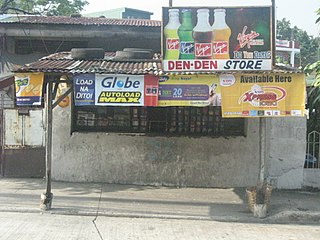 W
WA privilege sign is a retail store sign provided by a manufacturer, with the manufacturer's branding on it. The signs were provided to the store at no cost, in return for the manufacturer's advertising on the sign. Examples include Coca-Cola signs, bar/tavern signage provided by breweries containing that brewery's brand logo above the establishment's name, and painted signs on sides of shops.
 W
WProtest art is the creative works produced by activists and social movements. It is a traditional means of communication, utilized by a cross section of collectives and the state to inform and persuade citizens. Protest art helps arouse base emotions in their audiences, and in return may increase the climate of tension and create new opportunities to dissent. Since art, unlike other forms of dissent, take few financial resources, less financially able groups and parties can rely more on performance art and street art as an affordable tactic.
 W
WSafety signs are a type of sign designed to warn of hazards, indicate mandatory actions or required use of Personal protective equipment, prohibit actions or objects, identify the location of firefighting or safety equipment, or marking of exit routes.
 W
WScreen-Smart Device Interaction (SSI) is fairly new technology developed as a sub-branch of Digital Signage.
 W
WSign painting is the craft of painting lettered signs on buildings, billboards or signboards, for promoting, announcing, or identifying products, services and events. Sign painting artisans are signwriters.
 W
WSign Post Forest is a collection of signs at Watson Lake, Yukon and is one of the most famous of the landmarks along the Alaska Highway. It was started by a homesick GI in 1942. He was assigned light duty while recovering from an injury and erected the signpost for his hometown: Danville, Ill. 2835 miles. Visitors may add their own signs to the over 80,000 already present.
 W
WSignwriters design, manufacture and install signs, including advertising signs for shops, businesses and public facilities as well as signs for transport systems.
 W
WTranslated from Wikipedia Svenska
 W
WTrail blazing or way marking is the practice of marking paths in outdoor recreational areas with signs or markings that follow each other at certain, though not necessarily exactly defined, distances and mark the direction of the trail.
 W
WA Trivision, also called three-message sign, is a billboard/sign that consists of triangular prisms placed inside a frame. The prisms rotate 120°, each showing a new message of advertisement and/or information. As implied, three individual images, or messages, can be displayed on a Trivision.
 W
WA warning sign is a type of sign which indicates a potential hazard, obstacle, or condition requiring special attention. Some are traffic signs that indicate hazards on roads that may not be readily apparent to a driver.
 W
WA welcome sign is a road sign at the border of a jurisdiction or region that introduces or welcomes visitors to the city/county/state/province/prefecture/canton/region. Examples of welcome signs can be found near political borders, such as when entering a state, province, county, city, or town, and they are increasingly found in neighborhoods and private communities. In European countries under the Schengen Agreement, a welcome sign may be found at borders between countries. Its purpose is partly informational, to inform drivers where they are, and partly for tourism, as it affords an opportunity to advertise features within the region to people who are entering it. A welcome sign is a type of town sign—a sign placed at the entrance to and exit from a city, town, or village. In many jurisdictions, the format of town signs is standardized; in some, welcome signs may be distinct from the legally mandated town sign.
 W
WFounded in 1999, YCD Multimedia provides digital media solutions and applications within the retail environment, as well as other industries, including Quick Service Restaurants (QSR), banking, transportation, hospitality, entertainment, and education, among others.
 W
W W
W W
W